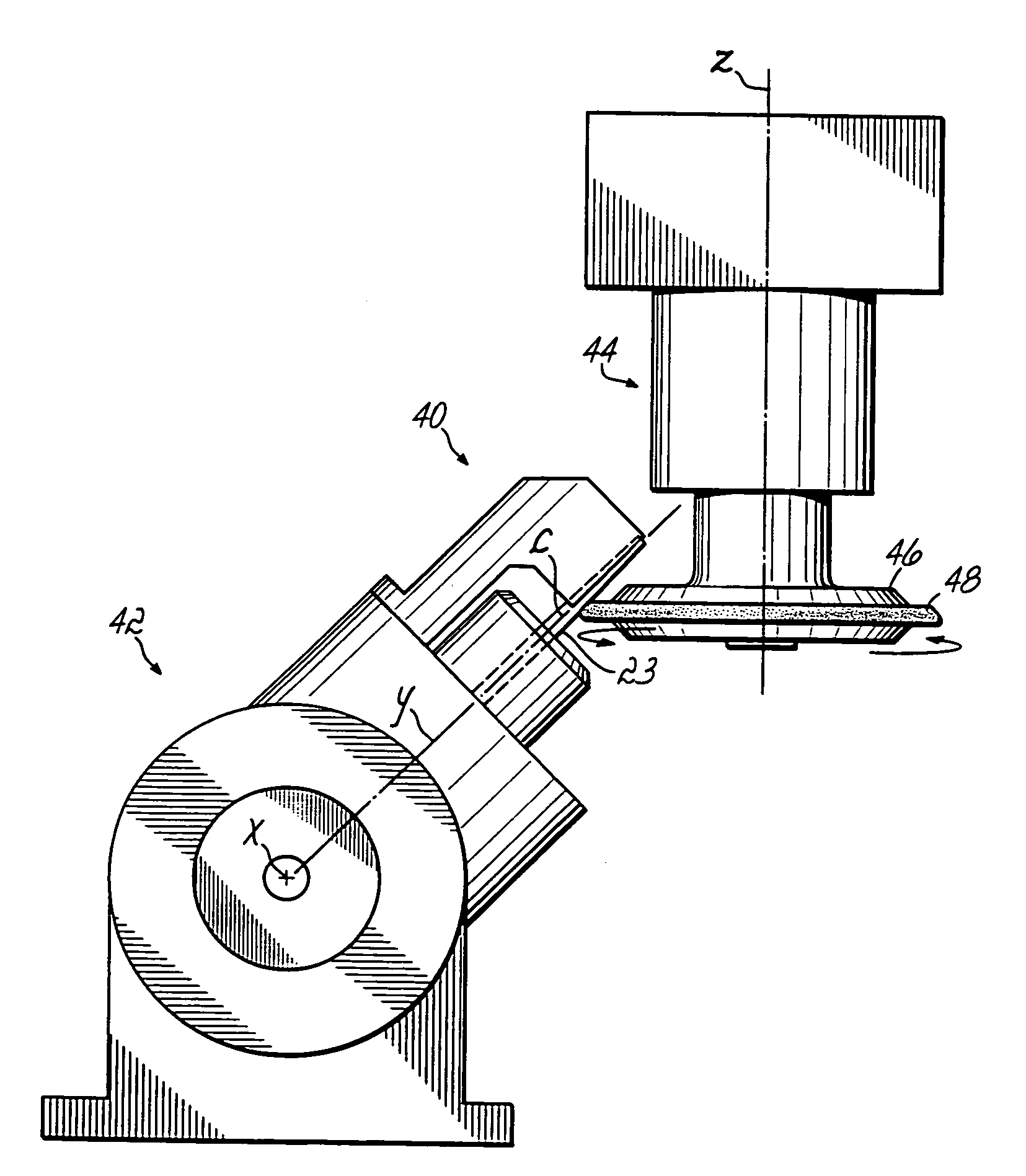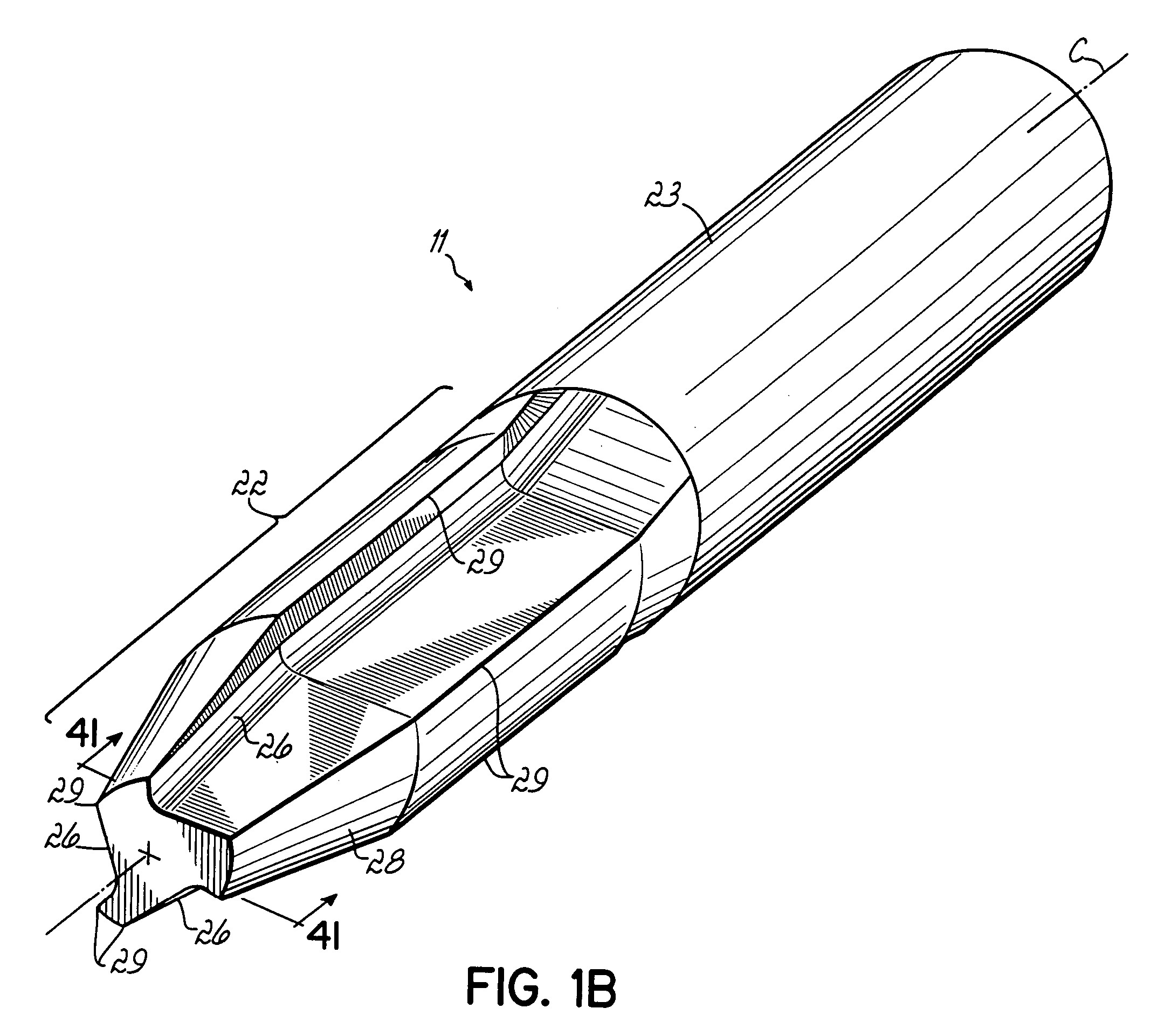Method of manufacturing an endodontic instrument
a manufacturing method and endodontic technology, applied in the field of endodontic instruments, can solve the problems of introducing machining stresses into the material, affecting the quality of endodontic instruments, etc., to achieve the effect of increasing surface hardness, reducing machining stress, and reducing machining stress
- Summary
- Abstract
- Description
- Claims
- Application Information
AI Technical Summary
Benefits of technology
Problems solved by technology
Method used
Image
Examples
Embodiment Construction
[0021]Throughout the figures, like reference numerals are used to refer to like parts. Referring first to FIG. 1, an endodontic instrument 10 constructed in accordance with an embodiment of the present invention is shown being used during a root canal procedure on a tooth 12. Tooth 12 includes root canals 14, 16 and an upper interior portion 18 which has been initially opened using another instrument, such as a drill (not shown). Instrument 10 includes a handle 20 for manual gripping by, for example, an endodontist and a working length 22 having flutes, as will be discussed in more detail below. Although these instruments are typically manipulated manually, the invention may be adapted to power-operated instruments as well. In a conventional manner, instrument 10 may be rotated in the direction of arrows “A” and reciprocated in the direction of arrow “B” by the endodontist to clean out and enlarge root canal 16. The working length 22 of the instrument 10 may include helical flutes 2...
PUM
| Property | Measurement | Unit |
|---|---|---|
| temperature | aaaaa | aaaaa |
| temperature | aaaaa | aaaaa |
| temperature | aaaaa | aaaaa |
Abstract
Description
Claims
Application Information
 Login to View More
Login to View More - R&D
- Intellectual Property
- Life Sciences
- Materials
- Tech Scout
- Unparalleled Data Quality
- Higher Quality Content
- 60% Fewer Hallucinations
Browse by: Latest US Patents, China's latest patents, Technical Efficacy Thesaurus, Application Domain, Technology Topic, Popular Technical Reports.
© 2025 PatSnap. All rights reserved.Legal|Privacy policy|Modern Slavery Act Transparency Statement|Sitemap|About US| Contact US: help@patsnap.com



